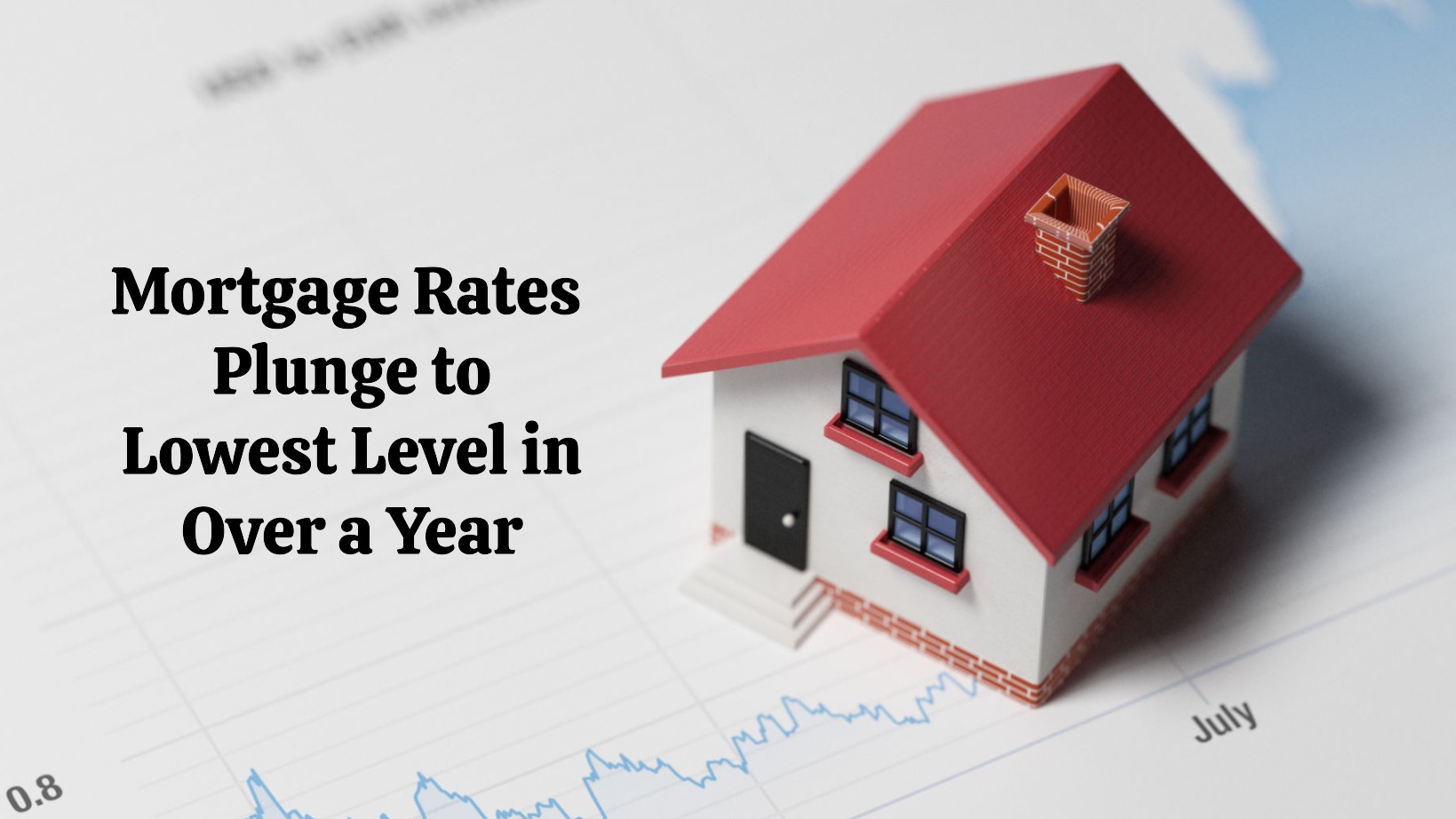It’s fantastic news for anyone thinking about buying a home or refinancing their current mortgage: Mortgage rates have dropped to their lowest level in over a year. This is a significant shift, and if you've been on the fence about making a move in the housing market, now might be the perfect time to seriously consider it. For those looking to purchase a new home, this translates into a more affordable monthly payment. For existing homeowners, it’s a golden opportunity to potentially lower their current housing expenses through refinancing.
Seeing rates fall this much is a welcome relief. For a long time, rates have been hovering at levels that made homeownership a stretch for many. We saw the 30-year fixed-rate mortgage climb above 7% at the beginning of 2025. Now, to see it drop to where it is today, nearly a full percentage point lower, is a substantial change. This kind of movement can make a real difference in what people can afford.
Mortgage Rates Today October 24, 2025: Rates Plunge to Lowest Level in Over a Year
What's Driving These Lower Rates?
While the exact reasons for interest rate fluctuations can be complex, generally speaking, lower mortgage rates are often a sign of a maturing economy or a response to certain economic policies. When the economy is stable or showing signs of slowing down, lenders might lower their rates to encourage borrowing and keep economic activity moving. Additionally, inflation plays a huge role; when inflation is under control or decreasing, the Federal Reserve might signal a less aggressive stance on interest rates, which in turn influences mortgage rates.
It’s also helpful to remember that mortgage rates aren’t set in stone by some single entity. They are influenced by a mix of factors, including the bond market, the overall health of the economy, and even global events. The fact that rates have been trending down for a bit now suggests a more consistent downward pressure, rather than a fleeting blip.
A Closer Look at the Numbers (Thanks, Freddie Mac!)
Let’s break down what these impressive numbers mean, drawing from the latest data from Freddie Mac's Primary Mortgage Market Survey®:
| Mortgage Type | Current Rate (10/23/2025) | 1-Week Change | 1-Year Change | Monthly Average | 52-Week Average | 52-Week Range |
|---|---|---|---|---|---|---|
| 30-Year Fixed-Rate Mortgage (FRM) | 6.19% | -0.08% | -0.35% | 6.28% | 6.7% | 6.19% – 7.04% |
| 15-Year Fixed-Rate Mortgage (FRM) | 5.44% | -0.08% | -0.27% | 5.51% | 5.87% | 5.41% – 6.27% |
I find it particularly interesting to see the 52-week range for the 30-year fixed-rate mortgage. It tells us that the current rate of 6.19% is not only the lowest in over a year, but it’s also at the very bottom of the range we’ve seen over the past twelve months. This indicates a significant drop from the peak we experienced earlier in the year. The 15-year fixed-rate mortgage is also showing some very attractive numbers, often a great choice for borrowers who can manage a slightly higher monthly payment in exchange for paying off their mortgage faster and saving on overall interest.
Why Refinancing is Booming
The data also highlights a crucial trend: refinancing is accounting for more than half of all mortgage activity. This makes complete sense given the current rate environment. When mortgage rates drop significantly from when you first took out your loan, it’s like leaving money on the table if you don’t explore refinancing.
Here’s a simple way to think about it:
- Lower Monthly Payments: By refinancing to a lower interest rate, your monthly mortgage payment can decrease. This frees up cash that can go towards other financial goals, like saving, investing, or paying down other debts.
- Reduced Total Interest Paid: Over the life of your loan, a lower interest rate can save you tens of thousands of dollars. Even a small drop in the rate can add up significantly.
- Shorter Loan Term: Some people choose to refinance into a shorter loan term (like a 15-year mortgage instead of a 30-year) even at a slightly higher rate to pay off their home faster. However, with rates as low as they are now, you might even be able to get a lower payment and shorten your term.
It’s not just about saving money, though. Refinancing can also allow you to:
- Cash Out Equity: If you’ve built up significant equity in your home, you might be able to take out some of that cash through a cash-out refinance to fund renovations, investments, or manage other financial needs.
- Convertfrom ARM to Fixed: If you have an Adjustable-Rate Mortgage (ARM) and are concerned about future rate increases, now could be a prime time to refinance into a stable fixed-rate mortgage.
Related Topics:
Mortgage Rate Predictions for the Next 12 Months: Oct 2025 to Oct 2026
Mortgage Rates Predictions for the Next 6 Months: October 2025 to March 2026
Mortgage Rates Predictions for Next 90 Days: October to December 2025
What Does This Mean for Homebuyers?
For aspiring homeowners, this is incredibly encouraging news.
- Increased Buying Power: With lower rates, a portion of your budget that would have gone towards interest payments can now go towards the principal. This means you might be able to afford a slightly more expensive home, or at least make a larger down payment, which can sometimes help you avoid Private Mortgage Insurance (PMI).
- More Manageable Monthly Costs: The overall cost of homeownership, from your monthly mortgage to potentially lower property taxes (if assessed on a lower value), becomes more approachable.
- Greater Negotiation Power: In some markets, a more favorable rate environment can lead to increased buyer demand, which can sometimes translate into more options and a better negotiating position.
From my perspective, this marks a significant positive shift. I’ve spoken with many people who have been sidelined from the housing market due to high rates. This drop could be the catalyst they need to finally make their dream of homeownership a reality. It also provides breathing room for those looking to upgrade or relocate.
Looking Ahead: What to Consider
While these lower rates are fantastic, it’s crucial to approach the decision thoughtfully. Markets can change, and while current trends are positive, it’s always wise to:
- Shop Around: Different lenders offer different rates and fees. Get quotes from multiple mortgage lenders to find the best deal for you.
- Understand Your Credit Score: Your credit score heavily influences the rate you'll be offered. Work on improving it if necessary.
- Factor in Closing Costs: Refinancing and purchasing a home both come with closing costs. Make sure you calculate if the savings from the lower rate will outweigh these expenses within a reasonable timeframe.
- Consult a Professional: A mortgage broker or financial advisor can help you assess your personal financial situation and determine the best course of action.
It’s a promising time for the mortgage market, and I’m genuinely excited to see how this benefits so many people.
Volatile Rates, Steady Returns—Why Rentals Still Win
Savvy investors are locking in properties that deliver consistent passive rental income and long-term appreciation.
Work with Norada Real Estate to find turnkey, cash-flowing homes in stable markets—helping you grow wealth no matter which way rates move.
HOT NEW INVESTMENT PROPERTIES JUST LISTED!
Speak with a seasoned Norada investment counselor today (No Obligation):
(800) 611-3060
Also Read:
- Mortgage Rates Drop to Lowest in 3 Years Boosting Purchasing Power
- Mortgage Rates Predictions Backed by 7 Leading Experts: 2025–2026
- Mortgage Rate Predictions for the Next 3 Years: 2026, 2027, 2028
- 30-Year Fixed Mortgage Rate Forecast for the Next 5 Years
- 15-Year Fixed Mortgage Rate Predictions for Next 5 Years: 2025-2029
- Will Mortgage Rates Ever Be 3% Again in the Future?
- Mortgage Rates Predictions for Next 2 Years
- Mortgage Rate Predictions for Next 5 Years
- Mortgage Rate Predictions: Why 2% and 3% Rates are Out of Reach
- How Lower Mortgage Rates Can Save You Thousands?
- How to Get a Low Mortgage Interest Rate?
- Will Mortgage Rates Ever Be 4% Again?



